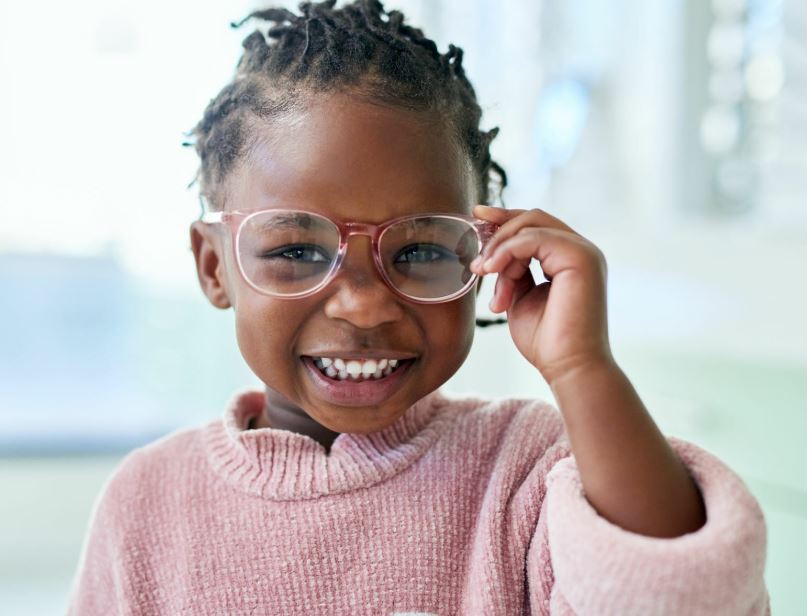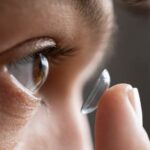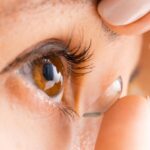
As parents, we always want what’s best for our children. That’s why it’s important to be aware of the signs that your child may need glasses. Vision problems can significantly impact a child’s development and overall quality of life, so early detection and treatment are crucial. In this article, we’ll explore the common signs of vision problems in children, specific vision problems that require glasses, how to get your child’s vision checked, treatment options, and tips for helping your child adjust to wearing glasses.
Common Signs of Vision Problems in Children
Children may not always be able to verbalize their vision problems but they do some gestures which may tell their struggles, so it’s important to be aware of the signs that may indicate an issue. Here are some common signs of vision problems in children:
Squinting
If your child is squinting frequently, it may be a sign that they are struggling to see clearly. Squinting is the act of narrowing or partially closing one’s eyes in an attempt to see more clearly.
Tilting of the head
Children with vision problems may tilt their heads to compensate for a misalignment of the eyes or other visual issues. Sometimes they may hold their head in their palms (thinking position).
Holding objects too close or too far away
If your child is holding books or other objects too close to their face, it may be a sign of nearsightedness. Conversely, if they are holding objects too far away, it may be a sign of farsightedness.
Rubbing eyes frequently
Children with vision problems often rub their eyes to relieve eye strain or fatigue. If your child is frequently rubbing their eyes, it may be an indication that they are struggling to see clearly.
Excessive tearing or dryness
If your child’s eyes are frequently watering or appear dry, it may be a sign of an underlying vision problem.
Sensitivity to light
Children with vision problems may be sensitive to light, which can cause discomfort or headaches. They may always have their lights off in their room, hide their face in an illuminated area, or avoid screens.
Sitting too close to a TV set or Computer
Though most children sit close to these TV sets or Computers, when you notice this is frequent and becoming more like a habit then it may be indicative of a vision problem.
Poor performance in school or sports
If your child is struggling in school or sports, it may be due to a vision problem that is impacting their ability to see clearly from the board. This will further discourage them from reading and affect their performance. Similarly, if vision problems exist, they may not show interest in sporting activities.
Specific Vision Problems That Require Glasses
Several specific vision problems may require glasses to correct. Here are some of the most common:
- Nearsightedness (Myopia): Nearsightedness is a condition in which a child can see objects that are close to them clearly, but objects that are far away appear blurry. In this condition, your child may complain of not seeing the board in class or their class teacher may notice squinting when the child is far from the board. They may also prefer front seats only due to their inability to see when sitting far from the board.
- Farsightedness (Hyperopia): Farsightedness is a condition in which a child can see objects that are far away clearly, but objects that are close to them appear blurry. It is the ‘opposite’ of myopia.
- Astigmatism: Astigmatism is a condition in which the cornea or lens is unevenly shaped, causing blurred vision at all distances because light falls at different points on the retina.
- Strabismus (Crossed eyes): Strabismus is a condition in which the eyes are misaligned, causing one eye to look in a different direction than the other.
- Amblyopia (Lazy eye): Amblyopia is a condition in which the brain ‘favors’ one eye over the other, leading to poor vision in the weaker eye. This can be due to uncorrected refractive error.
Other eye conditions that may require glasses include cataracts, glaucoma, and retinopathy.
When to Get Your Child’s Vision Checked
Doctors recommend scheduling your child’s first eye exam around 6 months of age. Subsequent exams can be scheduled between the ages of 3 and 5. After that, children should have their eyes checked every year or two, depending on their age and risk factors.
Treatments for Children with Vision Problems
If your child is diagnosed with a vision problem, there are several treatment options available depending on which vision problem it is. Here are some of the most common:
- Prescription glasses: Glasses can correct many vision problems and are often the first line of treatment for most people including children. Yes, Children can wear glasses and they won’t ‘damage’ their eyes as falsely spread around for years.
- Contact lenses: Contact lenses may be a good option for older children who can handle the responsibility of caring for them.
- Vision therapy: Vision therapy is a type of physical therapy for the eyes that can help improve visual skills. And reduce symptoms of certain vision problems including Binocular vision Anomaly.
- Eye patches: Sometimes, eye patches force the weaker eye to work harder as a treatment for amblyopia. This works by patching the good eye.
Tips for Helping Your Child Adjust to Wearing Glasses
Wearing glasses can be a significant adjustment for children, but there are several things you can do to help make the transition easier. Here are some tips:
- Choose the right frames: Let your child pick out frames they like and fit well. This will drive their urge to keep them on and not remove them.
- Encourage your child to wear their glasses: Make wearing glasses a positive experience by praising your child for wearing them. Remind them how much better they will be able to see with them.
- Teach your child to care for their glasses: Teach your child how to clean and store their glasses properly to help them last longer.
Conclusion
As parents, we want to give our children the best possible start in life. That’s why it’s important to be aware of the signs that your child may need glasses and to get their vision checked regularly. By detecting and treating vision problems early, we can help our children see clearly and thrive in all aspects of their lives.




